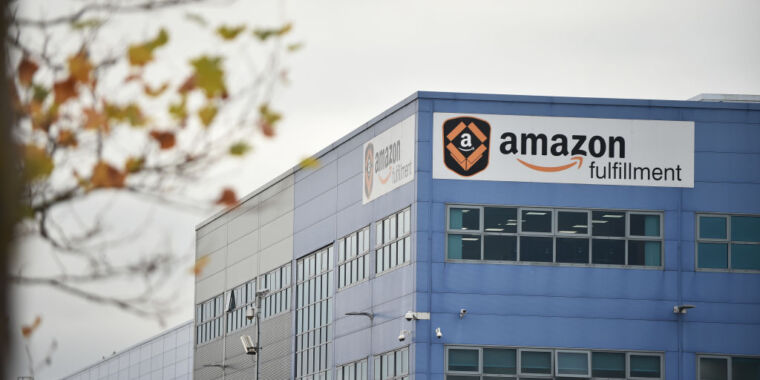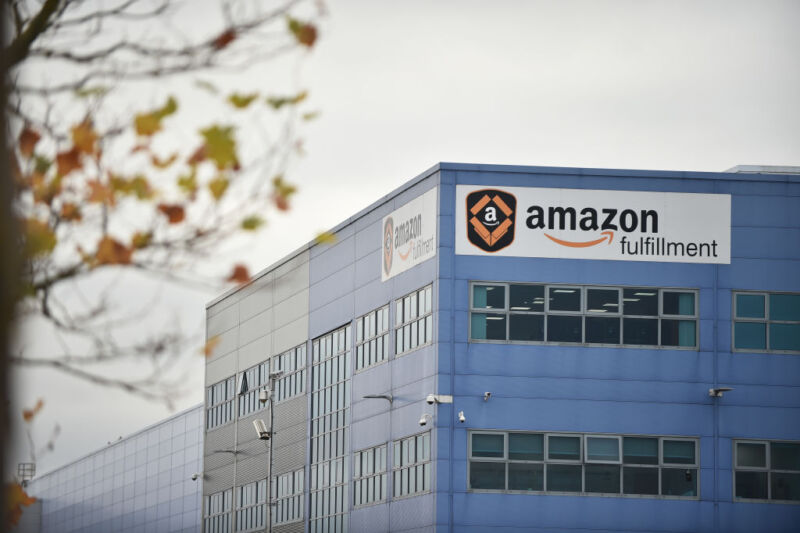

Nathan Stirk | Getty Images
Avril John was nine years old when she overheard a conversation in a train station that would stick in her memory. She and her family were on their way from Northumberland in the north of England to a small town in the Midlands called Rugeley, where a modern coal mine had just opened.
The year was 1960, and her father was one of many miners moving to the area for work. They were met at Birmingham station by a man from the National Coal Board. “I will always remember, for all I was only nine, how he said to my dad that [the mine] had just opened and it was guaranteed work for 100 years.”
Thirty years later, the mine closed. In 2011, the US online retailer Amazon opened a warehouse the size of nine football pitches right on top of it. When John, by then a 60-year-old, applied to work there, no one was making the kind of promises given to her father all those years ago: “At the Job Centre, it was stressed that it was till Christmas, possibly Easter, and maybe, maybe, a permanent job at the end of it. When I went to do my tests for the agency, it was stressed again: maybe.” None of her new colleagues should have been surprised when their jobs didn’t prove to be permanent, she says.
But people were surprised to begin with. In 2012, a year or so after the warehouse opened, I went to Rugeley to find out about the impact of Amazon’s 21st-century jobs on the old mining town. There was obvious symbolism in a place where the new economy was developing on top of the old; the pale-blue warehouse spread out next to the sooty brown towers of the dying power station.
Photographer Ben Roberts and I met plenty of people in those early days who were grateful for the new jobs inside that warehouse, but many were angry and disappointed with the insecurity of them. Workers on 1p above the minimum wage were divided into two groups: wearers of “blue badges” and “green badges.”
The former were permanent Amazon employees and the latter were temporary staff supplied by agencies who might one day achieve a blue badge or might be let go. The people of Rugeley were having to learn a new language of employment, one of “voice mechanisms” rather than unions, “associates” rather than workers, and where people were “released” rather than sacked.
Last year, Roberts and I returned to Rugeley to see what had changed for Amazon and the town in the intervening decade. Amazon’s value by market cap has risen from about $100 billion to $1.5 trillion. The personal wealth of Jeff Bezos, its founder, has swelled from roughly $23 billion to $170 billion. In Rugeley, meanwhile, the last remnants of the old coal economy have disappeared: the power station closed in 2016, and its cooling towers were destroyed in a controlled explosion last summer. After decades on the skyline, they crumpled like empty crisp packets and were gone within 10 seconds.
The anger toward Amazon, meanwhile, has dissipated. The company has become a better employer, at least in some ways. But it feels as if Amazon and Rugeley have learnt to live alongside each other, rather than to live together. Their stories are running along different tracks at different speeds, their fates not intertwined in the way of company towns of old. Whatever Rugeley’s future (and it doesn’t look bleak by any means), few in the town see Amazon at the heart of it.
An alarm sounds as Roberts and I stand at the reception desk in the Amazon warehouse. We catch sight of ourselves on a CCTV screen, a red circle around each of us. We step further apart, the circles turn green and the alarm stops. Amazon has been using the cameras to monitor social distancing between workers during the pandemic — just one of the ways in which computers hold the whip hand in this workplace.